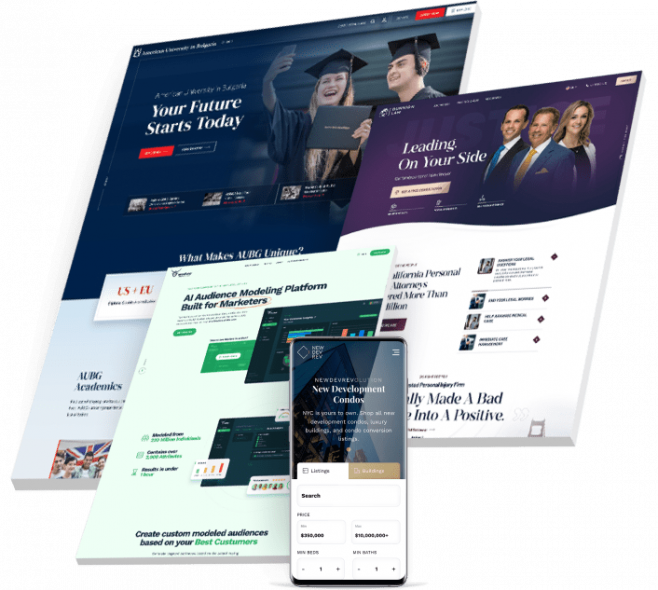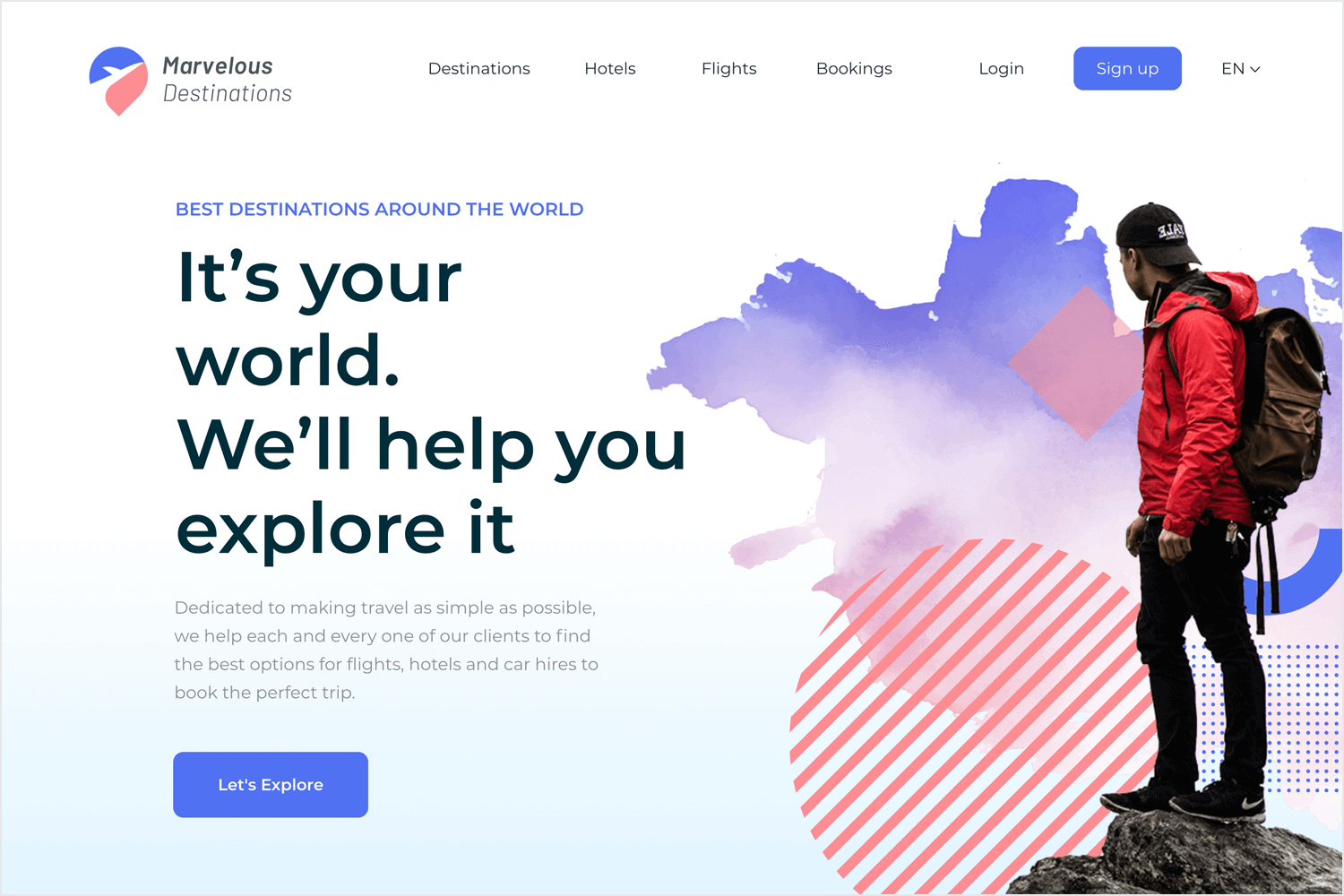Transform Your Brand with Cutting-Edge Website Design Techniques
Transform Your Brand with Cutting-Edge Website Design Techniques
Blog Article
Secret Techniques for Implementing User-Centric Site Style to Boost Involvement
When considering the application of user-centric web site style, particular techniques are important in increasing engagement. Detailed research study into user demands and preferences develops the structure, directing the creation of individual personalities to notify design choices. User-friendly navigating and responsive user interfaces are important, making certain simplicity of gain access to across all devices. Meanwhile, customizing web content improves customer contentment, and robust accessibility functions expand reach. These techniques jointly cultivate a more significant online experience. However exactly how do these aspects integrated successfully, and what practical actions can be required to guarantee their effective assimilation?
Comprehending User Requirements
Understanding customer demands is a basic action in the procedure of user-centric site design. Methods such as studies, meetings, and customer testing can provide valuable qualitative and quantitative data concerning just how customers interact with the web site.
Analyzing this information allows designers to create detailed customer personas that represent the different segments of the target audience. These characters help notify layout decisions by highlighting particular customer objectives and obstacles, guiding the development of features that address these demands properly. Additionally, understanding the context in which individuals operate-- such as their setting, device preferences, and time constraints-- can further improve the design method.
Empathy plays a crucial duty in this process, allowing developers to see the site from the customer's point of view. By focusing on customer requirements, the design process becomes more focused, protecting against the inclusion of unneeded components that might clutter the individual experience. Ultimately, a deep understanding of user needs contributes in crafting a website that is both purposeful and functional.
Designing Intuitive Navigating
Having actually developed a comprehensive understanding of user needs, the next action in user-centric website style involves developing intuitive navigation. Effective navigating is essential to customer complete satisfaction, influencing just how easily individuals can locate details and total tasks. To attain intuitive navigation, developers have to focus on simplicity and quality, ensuring that the navigation structure is regular and rational throughout the website.
Organizing web content right into a clear pecking order is crucial. Website Design. The usage of acquainted tags and symbols can lead customers easily, minimizing cognitive tons and improving the general individual experience. A well-designed navigating bar must be plainly placed, allowing individuals to identify their present place and conveniently explore various other areas of the site
It is additionally essential to incorporate interactive elements such as breadcrumbs and search functionalities to help individuals in navigating complicated websites. These features offer extra paths and improve the access of material, satisfying different user preferences and actions.
Testing navigating with real users is necessary to identify possible pain points and make certain capability straightens with user expectations. Normal responses loopholes and iterative enhancements can help maintain an effective navigating system that adapts to progressing customer needs, inevitably increasing engagement and complete satisfaction.
Producing Receptive User Interfaces
Invariably, producing receptive user interfaces is a pivotal aspect of modern-day website design, making certain that websites are available and functional across a multitude of tools and screen sizes (Website Design). This adaptability is essential in a landscape where customers accessibility material through smart devices, laptop computers, tablet computers, and desktops, each with varying positionings and resolutions. The primary objective of receptive layout is to enhance user experience by preserving optimum readability and use, no matter of the tool used
To accomplish this, web designers use adaptable grid designs, liquid images, and CSS media questions. Flexible grids enable internet site elements to resize proportionally, while liquid pictures ensure visuals scale properly without shedding quality. Media queries find here play a vital role by applying various designs based on the tool's characteristics, such as elevation, alignment, and width, hence tailoring the layout to the customer's screen.
Furthermore, responsive interfaces contribute to boosted search engine optimization (SEARCH ENGINE OPTIMIZATION) by supplying a seamless individual experience, which subsequently can decrease bounce rates and increase site involvement. In summary, taking on responsive layout is not merely a technical factor to consider but an important approach for promoting a user-centric web environment that satisfies the requirements of a diverse target market.

Individualizing Material Experience
Customizing content experience is a vital part of user-centric internet site layout that involves tailoring content to meet the one-of-a-kind preferences and behaviors of specific customers. This strategy not only enhances customer satisfaction however likewise cultivates deeper interaction, as visitors are most likely to connect with content that reverberates with their needs and interests. By leveraging information analytics and individual responses, companies can identify patterns and fads that inform the customization of web content.
Including personalization strategies can range from straightforward changes, such as suggesting products based on browsing history, to more advanced techniques like dynamic web content that adapts in real-time to a customer's interactions. For instance, customized touchdown pages can dramatically boost conversion prices by giving customers with pertinent information and uses that straighten with their previous activities and preferences.
Moreover, utilizing artificial intelligence and equipment understanding check my source can additionally fine-tune content personalization by continually gaining from user behaviors and adjusting to arising fads. This not just enhances the individual's trip yet also develops brand name loyalty, as consumers really feel recognized and valued. Inevitably, customizing the content experience is an essential approach for companies aiming to create a much more meaningful and interesting interaction with their target market.
Enhancing Ease Of Access Attributes
Enhancing try these out ease of access functions is a basic aspect of user-centric site style, making certain that electronic content is functional by everyone, consisting of people with specials needs. This approach not just follows lawful requirements such as the Americans with Disabilities Act (ADA) and the Internet Web Content Accessibility Standards (WCAG) however additionally significantly widens an internet site's target market reach. By incorporating features like keyboard navigating, display viewers compatibility, and alternative message for images, web sites come to be a lot more inclusive, giving a seamless experience for individuals with visual, auditory, or electric motor disabilities.
Incorporating responsive layout aspects is critical, assisting in gain access to on different tools and display sizes, thereby accommodating users with various choices and needs. Contrast proportions and message dimension changes can improve readability for people with aesthetic obstacles. Providing succinct and clear content structure, such as headings and checklists, aids comprehension and navigating, particularly for customers with cognitive impairments.
Routine availability audits must be conducted to identify and remedy potential obstacles, guaranteeing continued compliance and use. By focusing on accessibility, services not just foster inclusivity however also enhance overall individual engagement and fulfillment, ultimately driving higher conversion rates and enhancing brand name loyalty.

Final Thought
Incorporating user-centric design strategies significantly enhances website interaction by prioritizing the needs and choices of individuals. Thorough research helps with the creation of user identities, directing targeted layout decisions.
Thorough research study into customer demands and choices develops the foundation, directing the creation of individual characters to educate layout selections. Techniques such as studies, meetings, and customer testing can supply beneficial qualitative and quantitative information about how customers interact with the website.
By focusing on user demands, the style procedure comes to be more concentrated, stopping the addition of unnecessary elements that can mess the user experience. Efficient navigation is fundamental to user satisfaction, influencing just how conveniently users can locate details and total tasks. The use of familiar tags and icons can direct customers effortlessly, lowering cognitive load and enhancing the overall individual experience.
Report this page